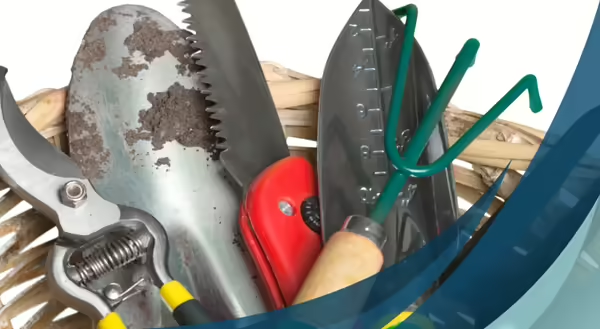
Before you pack your tools away for the winter, you’ll want to give them a good cleaning first. Use a wire brush to remove soil and debris. Rust can be removed with sandpaper. If there is a heavy buildup of sap or oils, it can be scraped off with a paint scrape, taking care not to gouge the metal. Wipe with alcohol or mineral spirits and follow up with a fine steel wool. Tools should be regularly sterilized with alcohol throughout the season, especially if your garden suffers from any disease issues, and also at the end of the gardening season. Finally, once clean, coat metal surfaces with oil like WD-40 or other lightweight motor oil.
Keep tools sharp
Winter is a great time to sharpen tools. While we all know the importance of keeping pruners and loppers sharp, even shovels will benefit from a few passes of the sharpener. Professional sharpening services are often inexpensive and very worth the price, but if you want to try tackling this yourself, there are a few things to keep in mind. First, is the material of the sharpening stone you want to use. The material will impact the resulting edge. An oil stone will leave a more saw-like edge, while a water stone will leave a smoother, sharper edge good for slicing. A diamond stone will be similar to an oil stone if using a lower grit, or it will be more like a water stone if using a higher grit. The benefit to a diamond stone is that it won’t require periodic resurfacing like water stones do. Next, you’ll want to consider the grit. A lower number will result in a coarser sharpening. This is a good place to start if tools are very dull or you don’t need a sharp edge, such as for a shovel or if your tool has burrs or chips. Standard blade sharpening should be about 700-2000 grit, while anything above 3,000 will yield an ultra-smooth edge.
If two-blade cutting tools are sharp, but still not cutting correctly, they may be out of alignment. Examine the shears for loose or bent parts and check for a space between the blades. If alignment is necessary, check for manufacturer instructions on realigning the blades.
Wooden tool care
For tools with wooden handles, proper care will keep the wood in shape for decades. After removing all soil and sap, use sandpaper to smooth out and chips or nicks in the handle. Finish with a coating of linseed or mineral oil to keep the wood from drying out and cracking.